Gracing the windswept summit of Mount Nemrut lies one of Turkey’s most extraordinary archaeological sites: the Hierotheseion, the monumental tumulus of King Antiochus I of Commagene. Epic in scale, the grave tells the riveting story of a man who thought himself larger than life, his pretentious belief manifested in stone for the world to witness.
Antiochus had a vision. A vision that saw him as an equal. An equal amongst gods.
That, upon his inevitable passing, he would ascend to divinity. And he would be seated exalted on a lithic throne where earth and heaven collide, and so would the immortals of all men. There, above a sweeping world, he would join a grand pantheon of East and West.
And thus, his men went to work, and Antiochus chose the barren slopes of Nemrut, the most magnificent peak of his kingdom, to build his sepulchre. So that when his day had finally come and the sun would set on his reign, he could rid himself of all the cumbersome woes of mortal men and rest.
Rest among the gods. For evermore.

Claiming an illustrious lineage from both Seleucus I Nicator, greatest of the Diadochi (some even say from Alexander the Great himself), and Achaemenid king Darius the Great, the Kingdom of Commagene had already been founded on the premise of cultural dualism (Commagene literally translates to “community of genes” in Greek), however, Antiochus dreamed bigger.
Building on the royal cult established by his father by incorporating both Iranian and Hellenistic elements, the young king envisioned himself amidst a syncretic pantheon of Persian and Greek deities, and thus in 62 BCE, he commanded a monumental tomb to be constructed on the desolate peak of Mount Nemrut, a sacred site that would not only serve as his final resting place but as a place of worship, as well.
Festivities in his honour, accompanied by huge public feasts, were scheduled to be held on the 10th (his ascension to the throne) and 16th (his birthday) of each month, and a dense net of further gravesites (Hierothesia of his father, grandfather, wife, as well as other family members) and temene (smaller shrines) across his realm ensured that the kingdom’s populace enjoyed regular access to these lavish ceremonies.
Although the cult declined rapidly following Antiochus’ death, today, his megalomanic vision stands as one of Turkey’s most impressive archaeological sites stemming from the Hellenistic period.
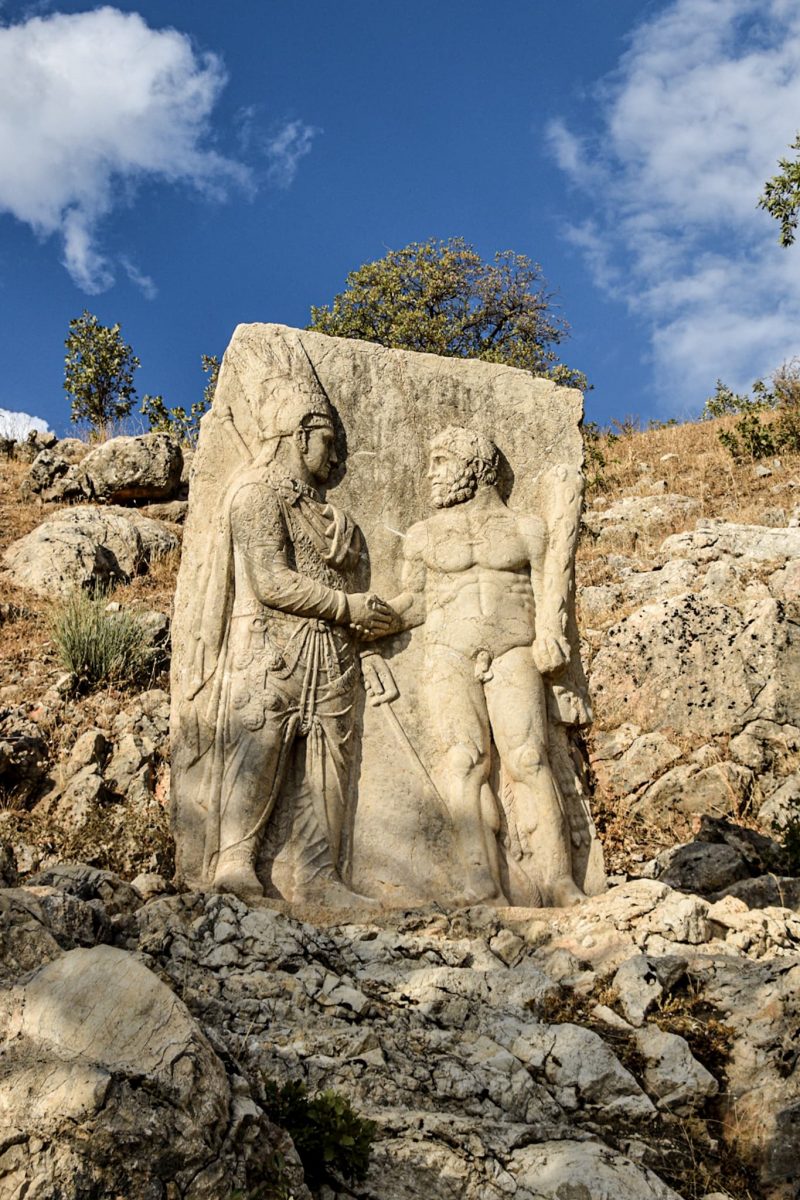
MOUNT NEMRUT
Entrance Fee | 30 TL (November 2022)
Opening Hours | Winter (Oct-Mar) 8:00-sunset | Summer (Apr-Sep) sunrise to sunset | open every day
THE HIEROTHESEION
Covering the entire summit, the enormous tumulus of Antiochus is an incredible feat of engineering. Measuring 145 metres in diameter and 50 metres in height, the cone-shaped gravel mound is surrounded by three terraces, named after their respective directions. While the northern terrace appears to be unfinished and merely functions as a connection route, the eastern and western terraces form the centre of cult.
Two identical groups of colossal stone statues (nine on each side of the tomb) constitute Antiochus’ new pantheon: Antiochus himself, Zeus-Oromasdes, Commagene, goddess of fertility and holy patroness of the kingdom, Apollo-Mithras-Helios-Hermes, and the legendary hero Artagnes-Heracles-Ares. Flanked by guardian animals (two lions and eagles respectively), the deities are called by their combined Greek and Persian names to symbolise the ethereal matrimony between these merged religions.
Though, decapitated at an uncertain point in time, the stoic heads now scattered across the site, the monument has not lost its grandeur. This holds especially true at sunrise/sunset when the tomb is kissed by the first or last rays of the sun, respectively.
Do not expect to bear witness to this spectacle alone, though!
The slopes get extremely crowded, especially at dusk. Also, remember to bring warm cloths. As soon as the sun vanishes, temperatures drop rapidly, even in summer.

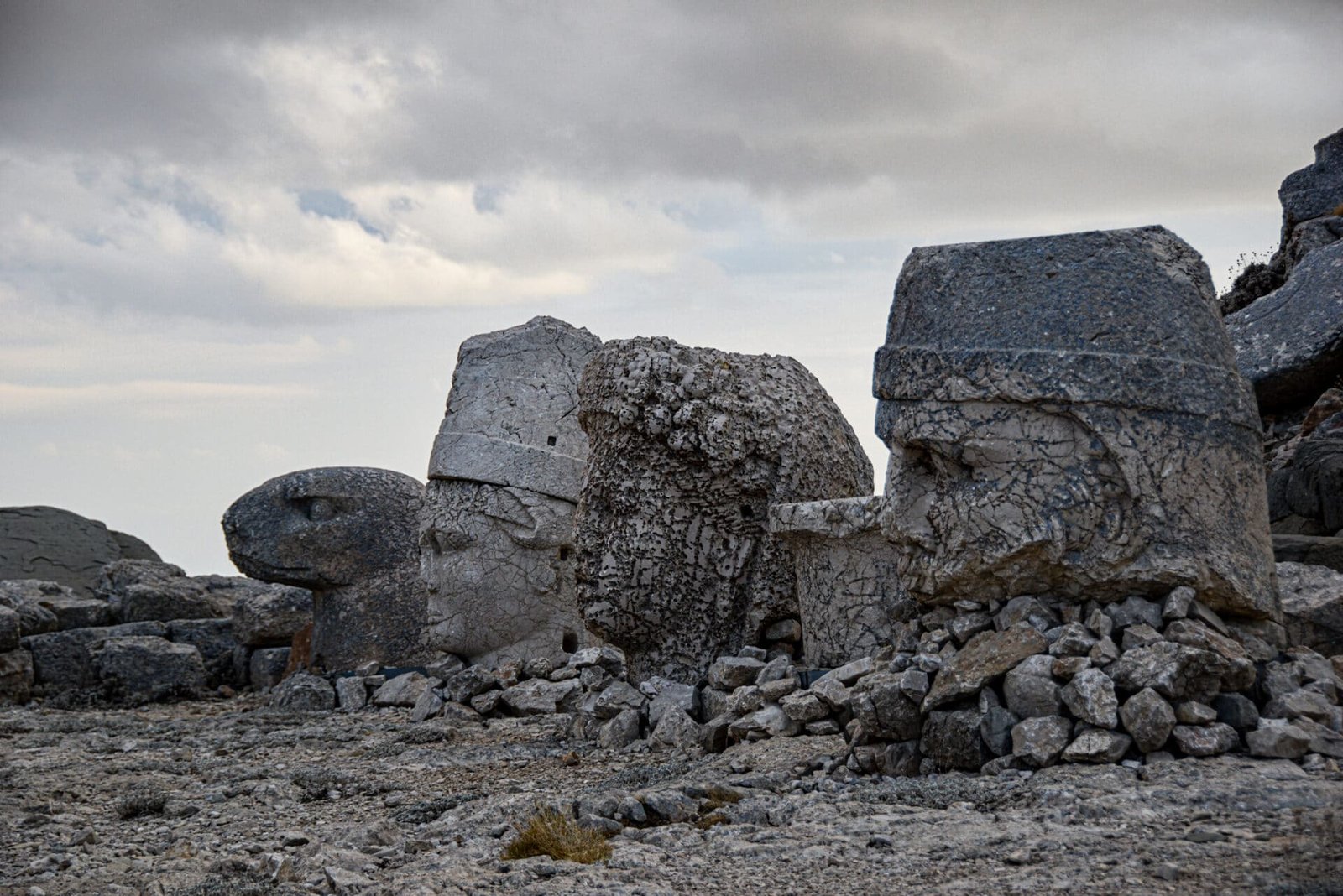
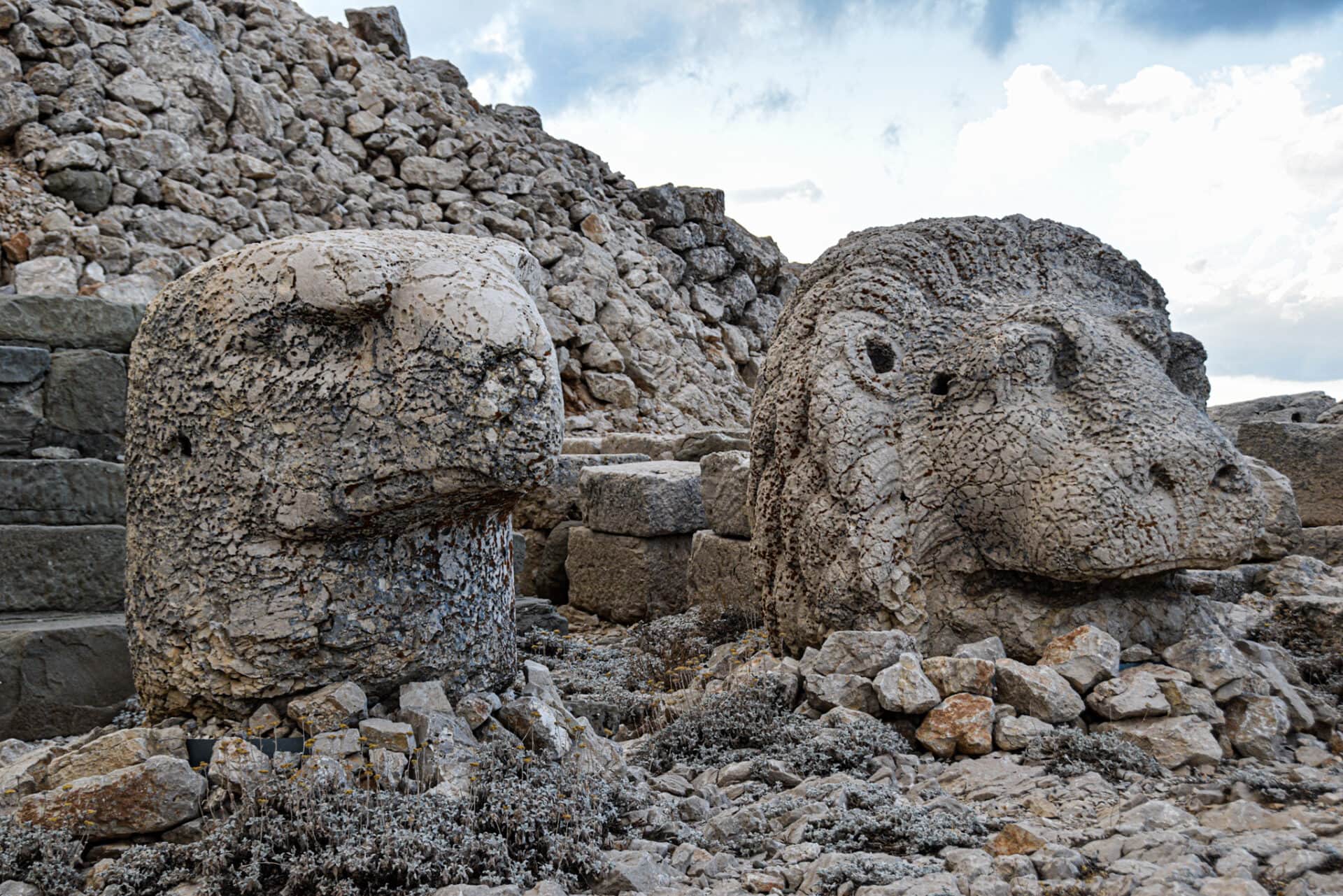
WHAT ELSE TO SEE
ARSAMEIA ON THE NYMPHAIOS
Most likely founded in the 3rd century BCE by Arsames, a local Armenian ruler seeking to carve out his own realm amidst the chaos of the Syrian Wars (a series of wars fought between the Seleucid Empire and Kingdom of Egypt during the Diadochi era), Arsameia later became the splendid summer capital of the Commagene Kingdom (163 BCE – 72 CE).
Today, there is not a whole lot to see at the site, the most striking remnants being two huge stone reliefs depicting the god Mithras, and a handshake between king Mithridates I and the hero Heracles, respectively.
There are also two tunnels leading into the mountainside. While one is barred, the other one is open to visitors and can be explored in its entirety, however, I read that you won’t find much after the strenuous 160 metre descent.
SEVEREN/CHABINAS BRIDGE
The Chabinas or Severen Bridge is a Roman bridge erected during the reign of Emperor Septimus Severus at the end of the 2nd century CE to secure supply routes in anticipation of planned military operation against the Parthian Empire. The bridge was built using scavenged materials of the nearby city of Arsameia, that was already abandoned when Rome annexed the territory.
Four giant columns once graced the bridge, however, only three remain, bearing weathered inscriptions of Emperor Septimus Severus, his wife Julia Domna, and his son and successor Caracalla.
If you are travelling independently, the bridge might also be a great starting point to explore the nearby canyon or find some relief from the blistering Anatolian heat by jumping into the cooling waters of the Chabinas river.
KAHTA CASTLE
Only opened to the public in summer 2022, following a 17-year-long renovation process, Kahta Castle sits enthroned on top a rugged ridge towering above the rushing Kahta stream.
Probably built on the foundation of a former palace of the Commagene Kingdom, the castle was restored and expanded upon by the Egyptian Mamluks at the end of the 13th century, and subsequently became an important border fortress and part of the pigeon mail system used in the Mamluk state.
Although, the citadel suffers from typical “castle-syndrome” (impressive from the outside, relatively disappointing from the inside), and parts, such as the main keep, are still closed to visitors, the castle offers magnificent views of the surrounding mountains and valleys.
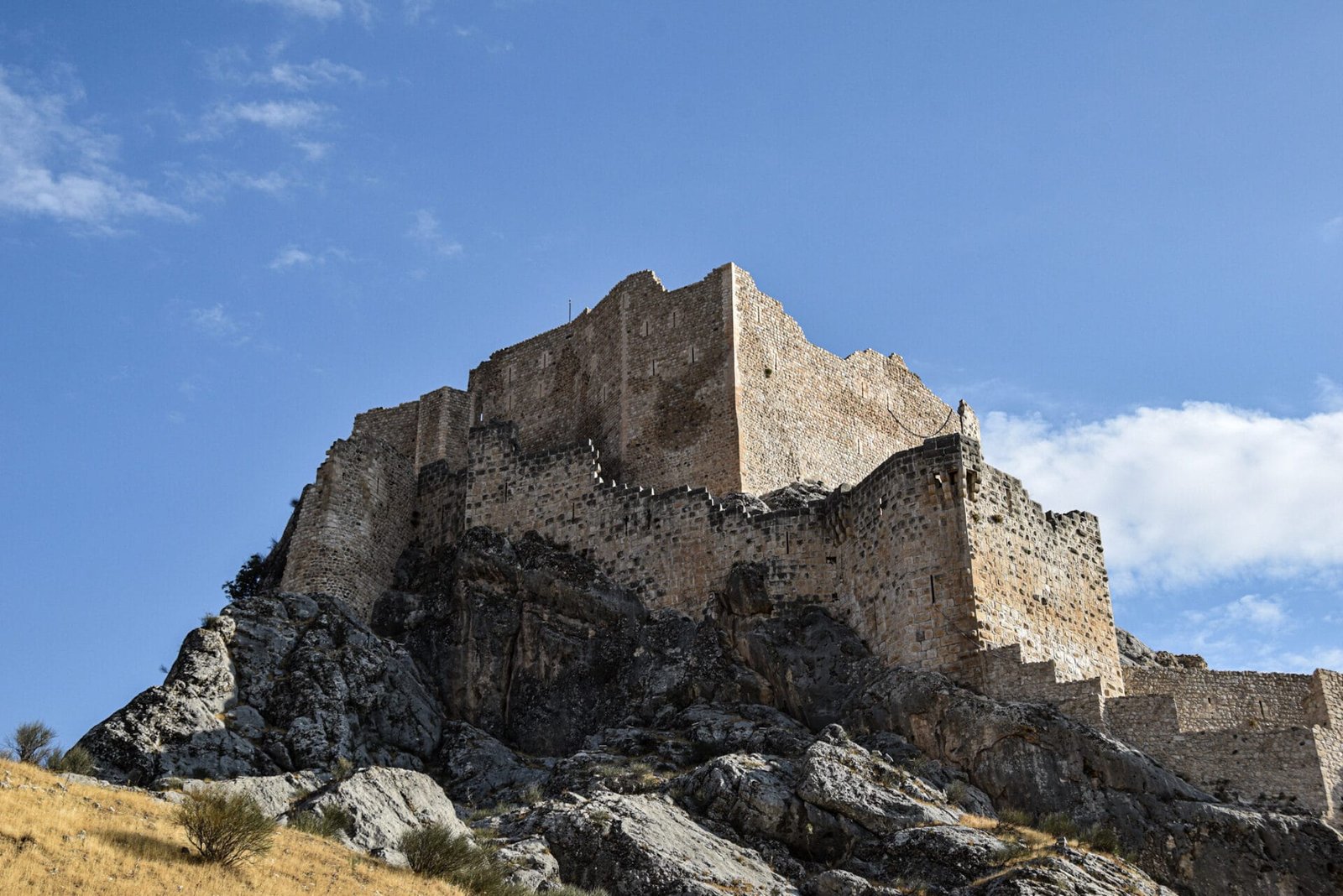
JOIN A TOUR TO MOUNT NEMRUT FROM KAHTA
Located 40 kilometres north of Kahta, Mount Nemrut is quite remote, and there are no public buses between Kahta and the UNESCO World Heritage site (as of November 2022).
This will leave you with three options:
- hitchhike
- rent a car for the day
- join an organized tour
Your only alternative would be to take a minibus from Kahta to the village of Karadut and hike/hitchhike the remaining 12 kilometres (accompanied by a strenuous 1140m elevation gain) to the tumulus.
In this instance, opting for a tour is most likely the best option, since you will be able to visit the other sights and won’t have to stress about finding a ride back. The tour was organized by Kommagene Hotel (which seems to be the standard accommodation option for independent travellers in Kahta), and they offer long tours (Mt. Nemrut + the three archaeological sites) or short tours (only Mt. Nemrut).
Alternatively, tours are organised daily from any major town in the region (e.g., Adıyaman, Şanlıurfa, Gaziantep, Malatya, etc.).
So far so good, however, this is where it got a bit shady in my opinion.
Initially, the owner tried to sell me the long tour for 55€ (the short one would have been 35€) but was quick to propose a “special deal”: the long tour + a night at the hotel for 50€ (35€ for the tour + 15€ for the room). Since he essentially offered me the long tour for the price of a short one, I accepted, though I am still unsure whether I ended up paying a fair price.
After doing some research, the general fee for the long tour seems to hover around 30-35€ for the day. Definitely, do not pay 55€!
HOW TO GET TO KAHTA
From Diyarbakir | Head to the Village Bus Station (right next to the main bus terminal) and take a dolmuş/minibus to Siverek. Tell the bus driver you want to go to Kahta. He will drop you off at the right spot since the buses to Kahta do not leave from the central bus station in Siverek.
Both rides will cost 50 TL (November 2022), respectively. The whole ride takes roughly 2 ½ hours.
Alternatively, there is also a direct bus at 14:30 from the main bus station in Diyarbakir.
From Adıyaman | If you are coming from the west head to Adıyaman to find frequent minibuses going to Kahta from there.
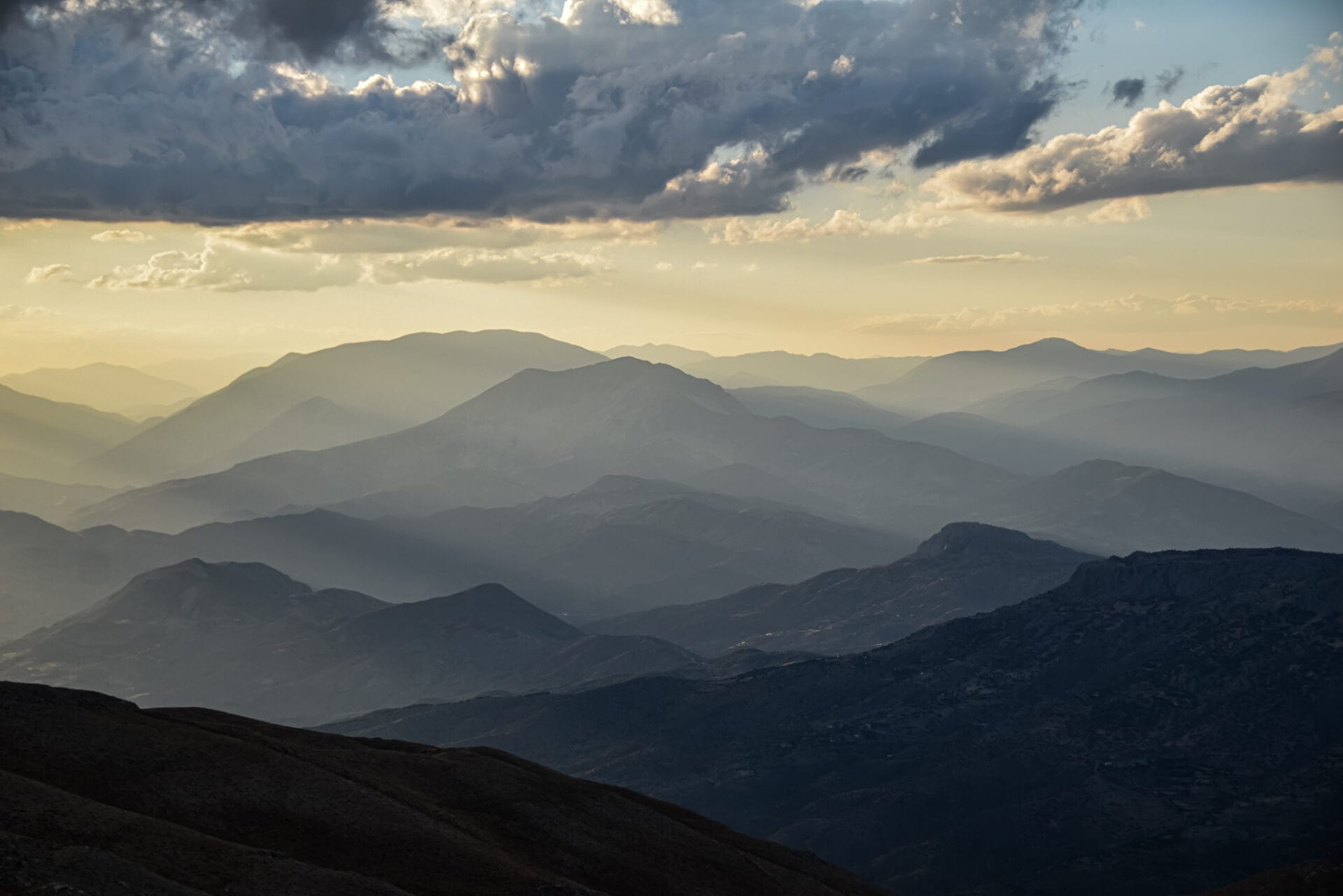
WHERE TO NEXT?
For more content consider following me on Instagram.
Turkey is abound with incredible vestiges of the past. Consider these:
